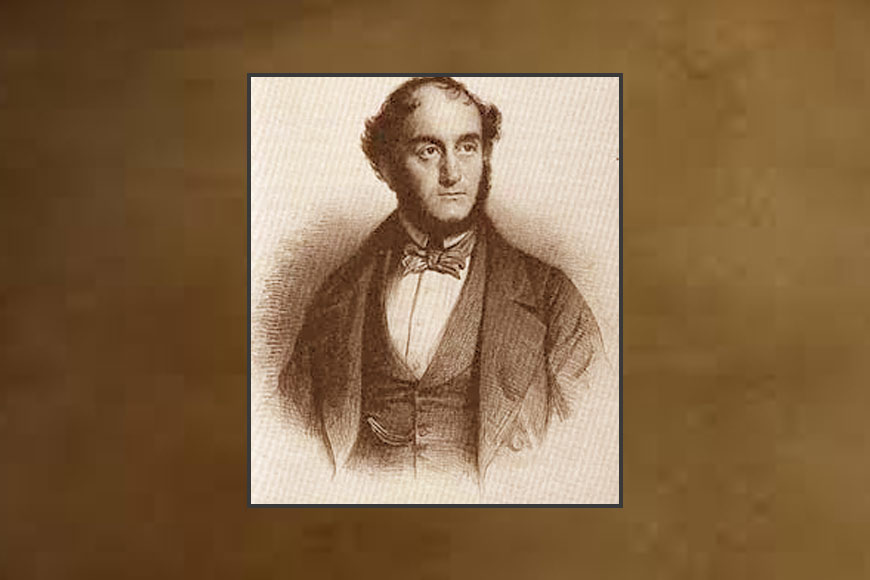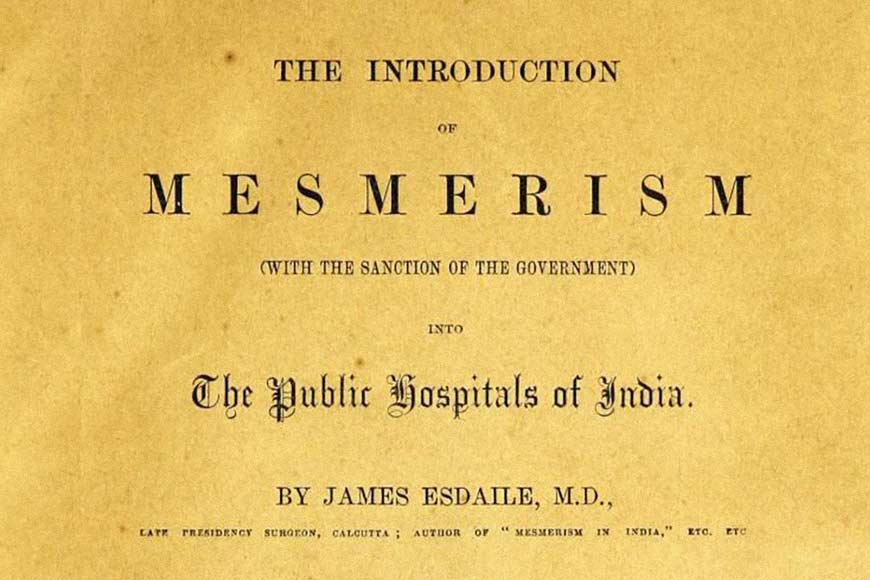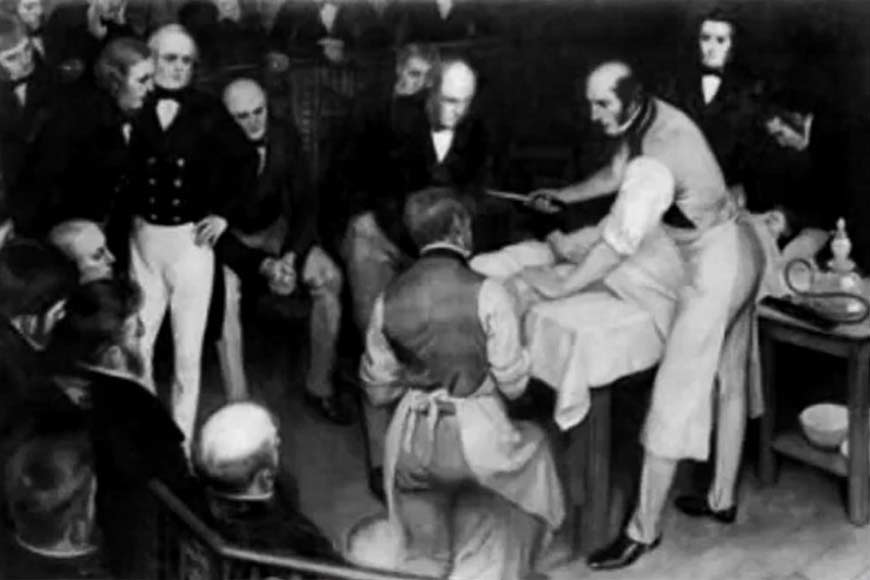Dr. James Esdaile: the Father of Anaesthesia started work at Hooghly Hospital - GetBengal story

The "miracle man", Dr. James Esdaile, was the father of anesthesia
Anaesthetists are important in medical science, as they play one crucial role in any surgery. Ensuring that the patient does not feel any pain or discomfort, or the patient does not suddenly wake up mid-surgery is a task that needs much concentration and expertise. In the present age, it is a relief that we possess the knowledge of anaesthesia.
There was such an epoch of history that did not have the luxury of anaesthesia and patients had to either endure the pain of surgery while being conscious or died mid-surgery. At such a time, the “mesmerist” appeared as a “messiah.” Dr. James Esdaile was called the mesmerist as he used a unique way of making people unconscious. Esdaile used mesmerism or animal magnetism; a practice popularized by Franz Mesmer in the late eighteenth century. Mesmerism is a pseudoscientific phenomenon involving the belief that all living things were surrounded by an invisible magnetic field or force that could be manipulated to produce various effects, including physical healing. Once mesmerized, subjects would enter a trance-like state, which was almost comatose and the term “hypnotic coma” came about. This state has also been called the plenary state or simply the Esdaile state.
 James Esdaile's book on mesmerism
James Esdaile's book on mesmerism
Esdaile was a surgeon who trained at the University of Edinburgh and who graduated with his MD in 1829. In 1830, he came to India and started working at Imambara Hospital, Hooghly. Esdaile was originally Scottish. He was advised by doctors that a warmer climate would better suit his delicate lungs. In April 1845, a local Hindu man, Madhab Kaura was sent to him from the Hooghly jail for scrotal surgery. He wrote about this incident in his book “Mesmerism in India, and Its Practical Application in Surgery and Medicine”. The man was suffering during the procedure which triggered Esdaile to try out the mesmerism of which he had only read. Esdaile placed his patient’s knees between his and began to pass his hands slowly over his face, at a distance of one inch, and carried them down to the pit of his stomach. That continued for half an hour. Though it took long enough Esdaile could successfully put his patient in a trance-like state. Esdaile went so far as to “apply” fire to the patient’s knee to test the patient’s trance-like state.
After the success of the first attempt, Esdaile started performing more such surgeries using mesmerism and eventually became popular. Esdaile conducted hundreds of surgeries and had only a 5 percent mortality rate compared to a 50 percent or higher mortality rate using other techniques. His name went far and wide and it increased even more when Esdaile cured the severe epilepsy of the wife of Hooghly’s Deputy Magistrate, Iswar Ghosal. He came to be known as the “miracle man”. Soon, Hooghly Hospital came to be known as Jadoo (magic) Hospital, not because the natives thought that he was casting magical spells but because they called it “Belatee Munter” (European Charm), a phrase used by Esdaile himself to describe mesmerism to the Indian assistants and the laymen.
Mesmerism was not at all easy and was a tiring enough process in which Esdaile himself became immensely tired, which is why he started hiring native assistants who would do the mesmerism for him and after that Esdaile would perform his surgery. Mesmerism could take days if not weeks and each mesmerist had their own way to achieve the trance-like state. This is why mesmerism was viewed as pseudoscience and not pure science, which bothered Esdaile. To legitimize his practice he used to perform surgeries on Europeans as well and reported the result of his experiments in the local newspapers to be viewed by everyone and be regarded as science. But mesmerism was intertwined with magic, it had no particular explanation or no fixed process and both these were contrary to science.
Sir Thomas Herbert Maddock, the Deputy Governor of Bengal came to know of these miraculous surgeries, being a particular man, he did not pay heed to hearsay and formed an inquiry committee composed of medical and non-medical personnel to investigate it. The report of the committee proved that it was not a hoax. Esdaile’s mesmerism was a miracle indeed. Maddock then allotted a room in Calcutta Native Hospital, now Mayo Hospital on Strand Road, for Esdaile to carry out further research and treatment.
Calcutta Mesmeric Hospital came up in late 1846 in Kolkata’s Mott Lane where Dr. James Esdaile was the chief surgeon and head along with Dr. Badan Chandra Chowdhury, an Indian surgeon, who was named his deputy. William Brooke O’Shaughnessy, a renowned Irish physician was quite intrigued about mesmerism and eventually turned to be a critic. Shaughnessy cited some instances where the patients came out of their hypnotic state during the surgery to show that mesmerism was not fully viable. Under pressure from O’Shaughnessy, the new deputy governor, Sir John Littler ordered the closure of Calcutta Mesmeric Hospital. It was closed in January 1848.
 James Esdaile used hypnotherapy to help people experience more comfortable and effective surgeries
James Esdaile used hypnotherapy to help people experience more comfortable and effective surgeries
Dr. Esdaile’s hospital became operational again on September 1, 1848, as a result of the movements by both native and non-native people who forced the Bengal government to reopen the place, but they refused to bear the cost. Enthusiastic supporters even raised subscriptions to fund the place. After all, mesmerism was a costly affair and was time-consuming as well. Critical patients cannot avail of such a method as they have little time left on their hands.
By this time analgesic drugs such as ether and chloroform started becoming more and more popular and they were way cheaper than mesmerism and were not so time-consuming. With better alternatives, mesmerism lost its relevance. Even Esdaile had to reluctantly recognise their effectiveness as better methods. After thorough analysis and research, it is now understood in modern hypnotherapy that the Esdaile state is not a state of unconsciousness and that the client is actually fully aware of all that is happening. For the external observer, it looks like someone in this state is completely non-responsive, yet when interviewed later, someone in this state says that they heard all that was being said, yet they were so relaxed that they simply did not want to respond as that was more effort than they wanted to concern themselves with.










